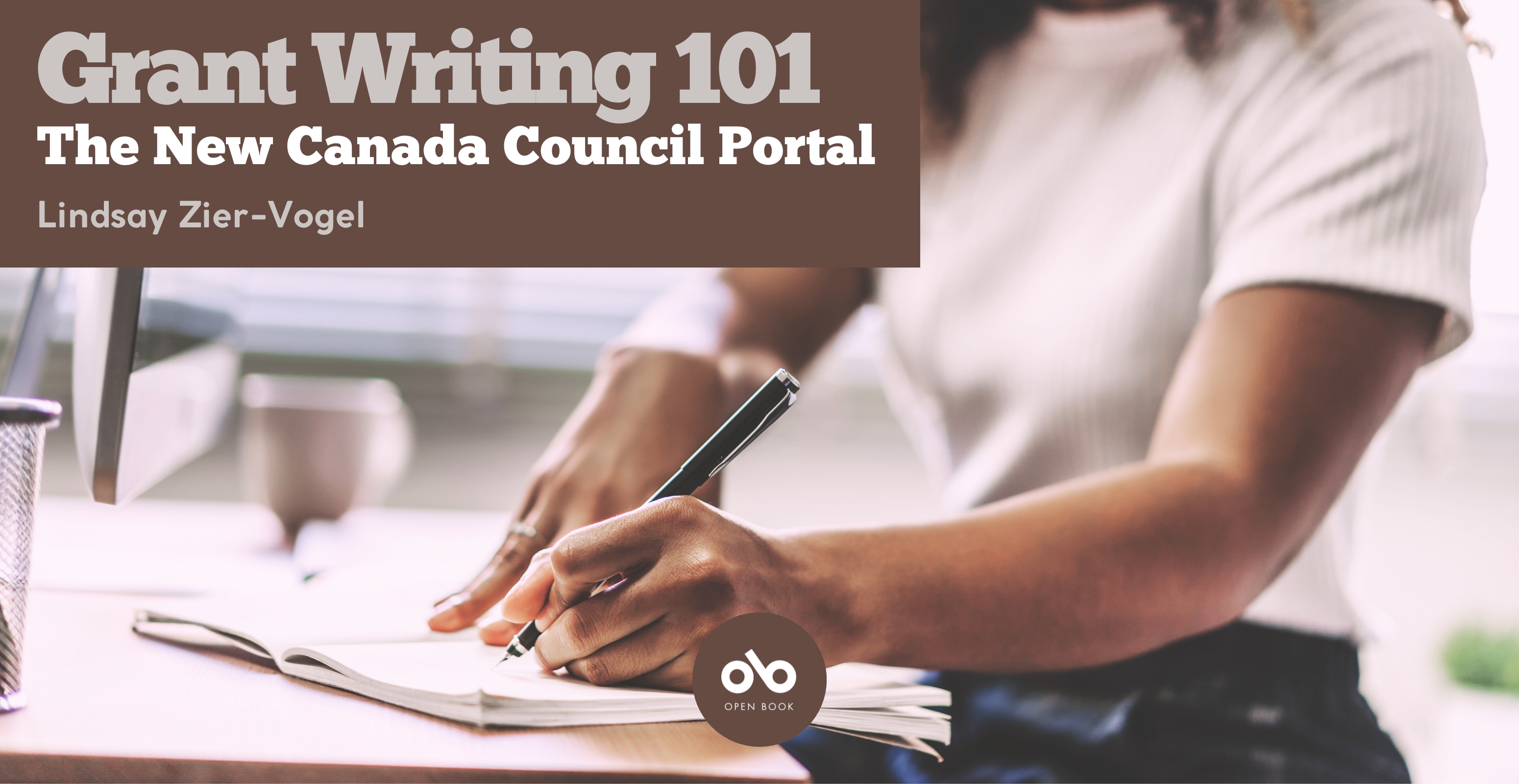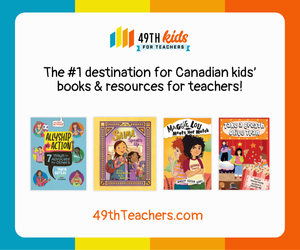Grant Writing 101: The New Canada Council Portal
By Lindsay Zier-Vogel
The Canada Council for the Arts has a new portal and truth be told, it’s going to take us all a while to get used to it, but I’ve gathered up all the questions and frustrations I’ve been hearing from writers and will hopefully answer all your burning Qs below!
Creating an account
You no longer need to submit your CV for approval! Anyone can make an account. There are still some criteria though, so when you make your account for “artist/other arts worker” ensure that you fit into the definition of artist. There is no minimum number of publications, though it does indicate that you must have:
- developed your arts skills through formal or informal learning
- been compensated in a manner that is appropriate for your artistic practice and region, and accomplished one of the following:
- maintained an artistic practice for at least 1 year and completed at least 2 artistic activities that were made available to the public, or
- worked in an arts role for at least 12 months (not necessarily consecutive)
Main grants for writers:
Artistic Creation (up to $75,000): 3 applications max/year
This is what used to be “Research & Creation” and “Concept to Realization” (which writers couldn’t apply for). It covers any portion of the creative process, from artistic research to experimentation, to creation, production, collaboration and public sharing of work.
Note: Self-publishing is now eligible, including the creation of physical copies or online publications.
Micro-grants (up to $10,000): 3 applications max/year
This replaces the Canadian residencies, and Professional Development grants and now allows individual artists to apply for support for exhibition or presentation opportunities, increasing accessibility for audiences, artists and/or arts workers who are Deaf or have disabilities
It’s in place to “support the professional growth and advancement of artistic careers or practices of artists, arts workers, groups and organizations”.
Activities can take place, internationally, nationally, locally, and even virtually, and can even take place within your own city.
Your CanLit News
Subscribe to Open Book’s newsletter to get local book events, literary content, writing tips, and more in your inbox
Circulation & Touring (up to $200,000): 6 applications max/year
This is for touring in Canada and outside of it (minimum stops: one). And now there’s no limit to how far away your tour stops are from your original destination.
Note: you will need to receive compensation from presenters to be eligible for this grant.
Composite Activities (up to $100,000 each year for three years): 1 application max/year
This provides multi-year funding for longer-term projects that take place for up to three years. Note: you have to have received project funding prior to applying for this one. Check the guidelines in the portal!
International residencies (up to $20,000): 2 applications max/year
This is to fund participation in an international residency (outside of Canada) for at least 5 consecutive days. You need to have been invited or selected by an organization.
Additional grants:
There are additional grants available for Indigenous creators, including Travel, Small-Scale Activities, and Short-Term Projects, and Long-Term Projects.
There are grants for individuals as well – take a look through the portal to see if any are a good fit for you and your project!
LET’S GET STARTED:
Don’t panic!
It’s going to look different and it’s going to be confusing, BUT remember that battling through this portal means the potential of getting paid to write! Always worth it!
Navigating the portal
After you log in, click on the blue rectangle on the left-hand side that says “Funding Opportunities”. From there, use the filtering menu to help with your search (Start with “Individual”, “grant” and “open status”).
BEFORE you get to the grant Qs
New to this portal, you have to complete three forms before you can get to the grant questions. Click on the “complete” button to access:
1: account information (to review basic contact info)
2: Self-ID: this is optional
3: Applicant Profile
Note: there’s no place for an artist CV here. DO not be alarmed! That will go into the Support Materials section.
Gathering Qs
Now we can finally get into the grant application! Yay.
Unlike the last portal where you could see all the questions you had to answer on one page, with this new portal, you *have* to fill out sections before you can move onto the next page. Is it incredibly frustrating? Yes. But here’s what you’ll do: write “test” in every required text box. This will let you be able to move forwards and see what all the Qs are.
My forever recommendation is to copy and paste the questions into a wood/google doc including the character counts, so you’re able to work on the answers NOT in the portal! Is it tedious? YES! But portals are precarious and finicky and have been known to crash/not save answers/etc. And when you have a word doc with the answers, you can repurpose them for future grants – win-win!
Character counts *NOT* word counts
Most grants use word counts, but the new Canada Council grants use character counts (including spaces!)
Question guidelines
Instead of tucked in italicized font underneath the question, the guidelines/suggestions for answering questions are now in a side bar on the right-hand side of the screen. You have to scroll to read through them and it’s awkward as can be, but there’s some key info there and you don’t want to miss it.
Here are my tips on answering grant questions: Grant writing: Part 1
Timeline Q:
I’ve written out a guide on how to answer the timeline question and you can read it here!
Budget
The budget form is no longer in an excel spreadsheet. It’s in a very clunky section of the portal, separated into two sections: Expenses and Revenue.
Writers generally don’t have a lot of expenses (or revenue!). It is the same budget form for every single applicant, and any of these boxes are for projects involving studio rentals and composers etc.
The most important sections for writers who are applying for creation are:
Revenue: Canada Council for the Arts (put in your request amount here)
Expenses: Artists and professional fees, cultural participant fees OR compensation OR personal costs (this will include costs for you and any editors/beta readers)
There might be a few other categories:
- Per diems and accommodations (no limit here like there used to be!)
- materials and supplies
- Childcare/dependent care costs
Everyone is asking: how much money should I apply for? The max now is $75,000, up from $25,000, but you still need to explain and outline the amount requested in the budget notes section.
For the artist fee: I suggest figuring out how many weeks/months you will need to complete your project, and figuring out an hourly/weekly or monthly wage that will work for you. The Canadian government suggest that $50/h, though I’d suggest going a bit higher than that! (More here).
Also, don’t forget to pay your beta readers/editors. I like to use Writers Union of Canada rates for that.
More info about creating budgets here!
Support Material
The support material section is a bit different than in the previous portal. This is where you put your artist CV (Tips on writing an artist CV here!), along with the CV of any editor/beta reader and a letter of agreement from them.
This is also where you’ll add in your writing sample (10-20 pages).
Note: Jurors have 10 minutes maximum per application, so don’t submit more than what’s suggested!
More tips on Support Material here!
Application Assistance
Individuals or the lead applicants for groups who self-identify as Deaf, hard of hearing, having a disability or living with mental illness; and/or First Nations, Inuit or Métis facing language, geographic and/or cultural barriers are able to apply for application assistance. More here!
The views expressed by Open Book columnists are those held by the authors and do not necessarily reflect the views of Open Book.
Lindsay Zier-Vogel is an author, arts educator, grant writer, and the creator of the internationally acclaimed Love Lettering Project. After studying contemporary dance, she received her MA in Creative Writing from the University of Toronto. She is the author of the acclaimed debut novel Letters to Amelia and her work has been published widely in Canada and the UK. Dear Street is Lindsay’s first picture book, and is a 2023 Junior Library Guild pick, a 2023 Canadian Children’s Book Centre book of the year, and has been nominated for a Forest of Reading Blue Spruce Award. Since 2001, she has been teaching creative writing workshops in schools and communities, and as the creator of the Love Lettering Project, Lindsay has asked people all over the world to write love letters to their communities and hide them for strangers to find, spreading place-based love.



